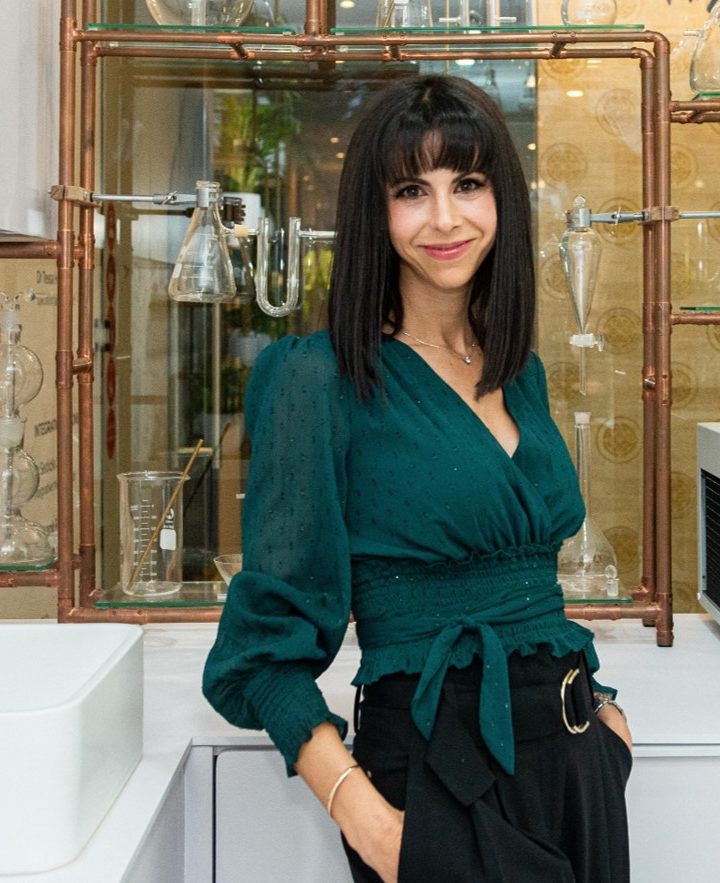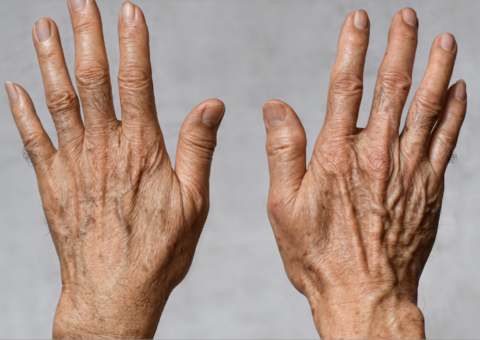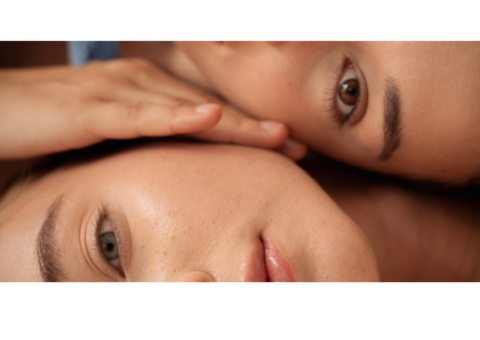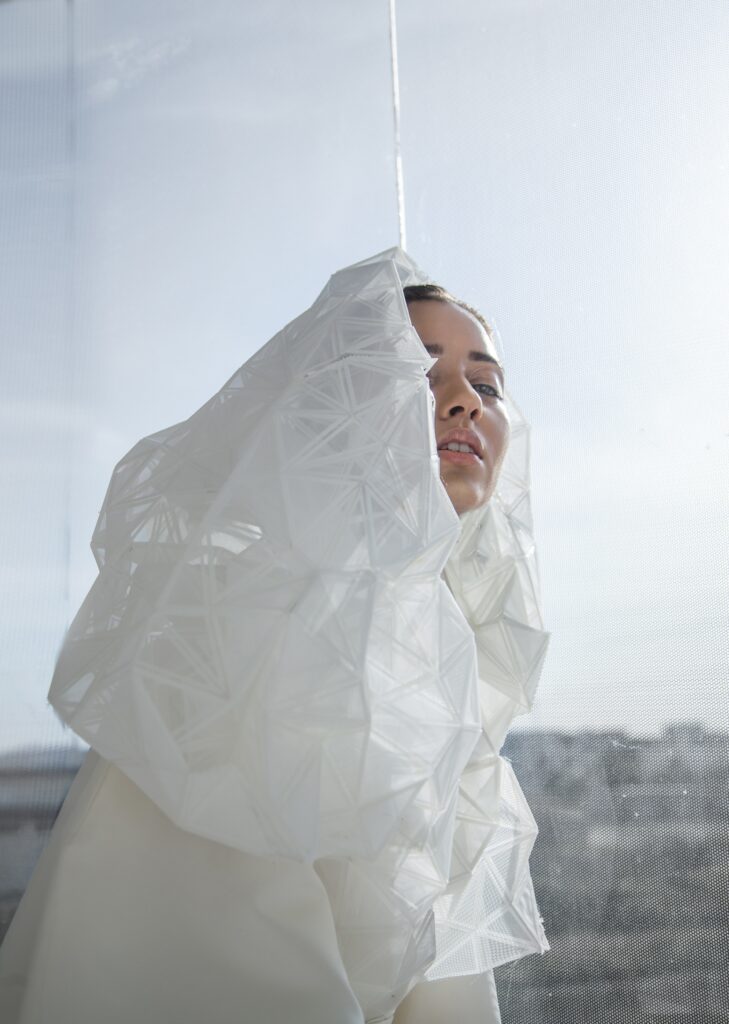
If you’re a patient of mine, you’ve for sure heard me harping on about the importance of protecting and restoring your skin’s barrier.
![]() Why?
Why?
Well, when it comes to skin, barrier is EVERYTHING!
It is what makes the difference between healthy, comfortable skin and eczema, infections, inflammation and dehydration. Essentially, it keeps the bad stuff like bacteria and pollution from getting IN, while stopping the good stuff, like moisture, from escaping OUT into the atmosphere. There is even an ominous sounding name for this process: transepidermal water loss (TEWL).
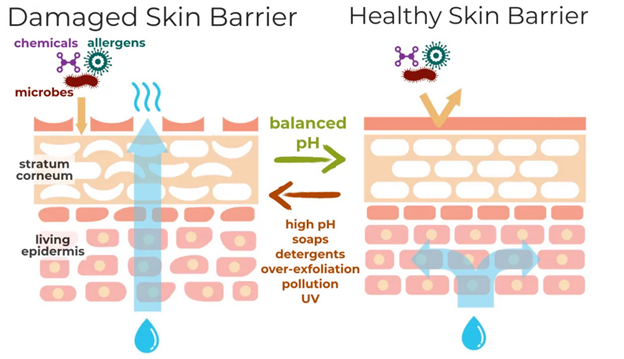
![]() What makes up our skin barrier?
What makes up our skin barrier?
Simply put, the skin barrier is a little coat of armour that surrounds the skin to protect it from the outside world. In Covid-terms, you can think of it as our front-line. Our skin barrier is made up of the epidermis and, most specifically, the specialized, outermost layer of the stratum corneum. It is a layer of actively shedding fully differentiated ‘dead’ skin cells which are fortified with a latticework of remaining cell-to-cell connections and a complex lipid matrix which fills the gaps between the cells and limits water loss from the skin.
![]() What does an impaired skin barrier look like?
What does an impaired skin barrier look like?
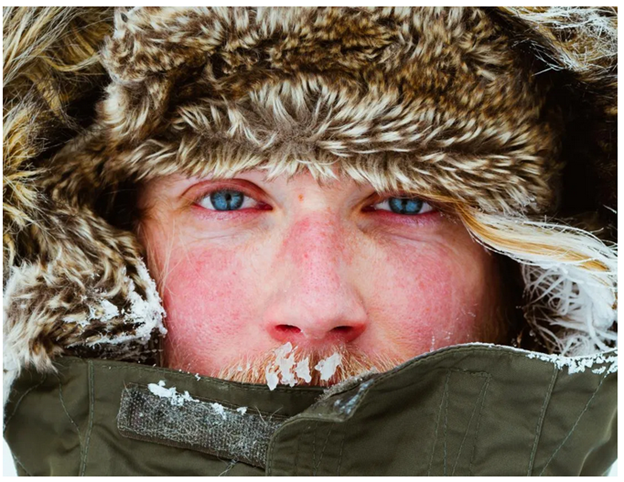
A skin with a compromised barrier is not a happy one, or a youthful one. It becomes dull, dry, flaky, red, itchy, sensitive – and older-looking.
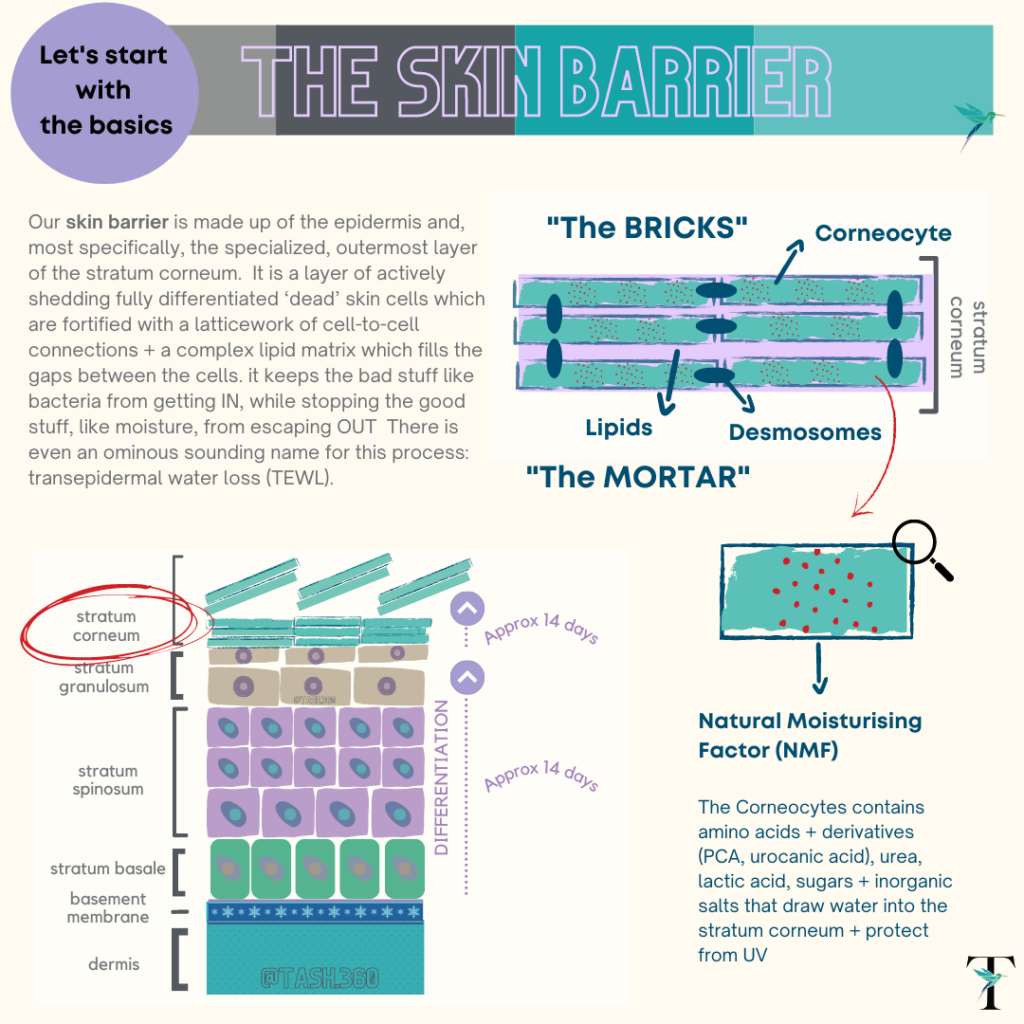
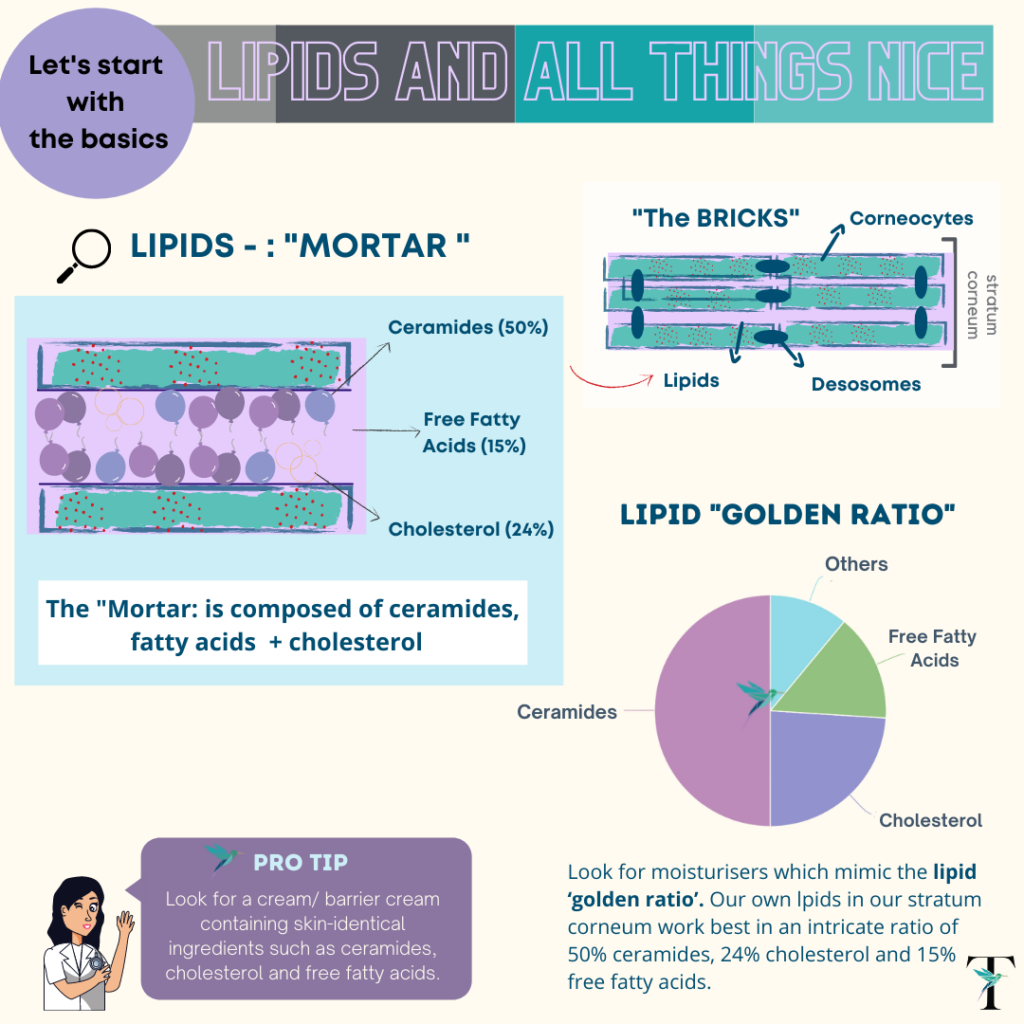
![]() REMEMBER: An impaired skin barrier is a WOUND!
REMEMBER: An impaired skin barrier is a WOUND!![]()
![]() How does your skin barrier get damaged?
How does your skin barrier get damaged?
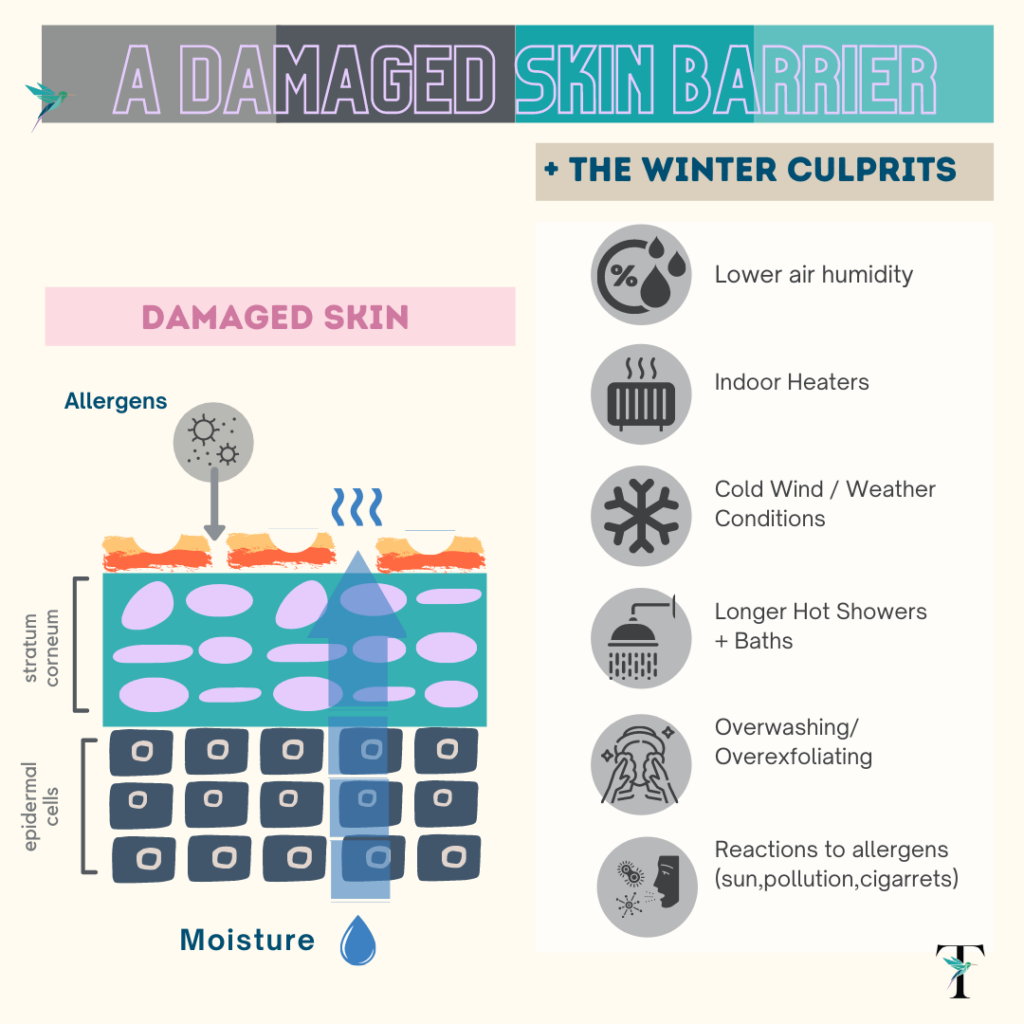
- Genetics causing issues like eczema
- Reactions to certain allergens eg nickel or fragrance
- The sun and intense cold
- Pollution
- Cigarette smoke
- Experimenting with strong active skincare ingredients
- Over-cleansing
- Over-exfoliating
- Cleansers with harsh surfactants
![]() So how do we repair our skin barrier?
So how do we repair our skin barrier?
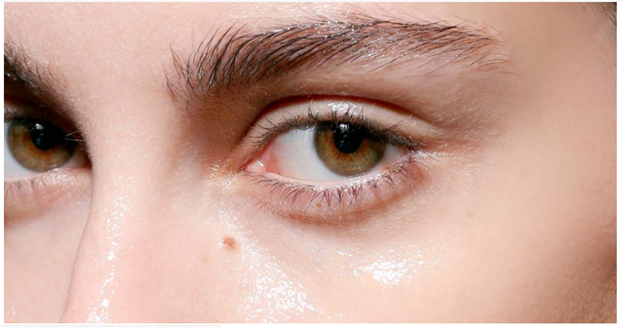
Moisturisation. Your skin is parched and flaky; add a moisturizer and voila – smooth, glowy skin with plumped-out wrinkles. Simple right? We’ve got this part of skincare waxed.
Nope. Quite the opposite of simple in fact. While at its most pared down, we need to feed water to the skin to hydrate it combined with something oily to prevent the water from evaporating back out, the ins and outs of moisturisers are pretty complex. And in the same way that canola oil is not the same as cold pressed olive oil when it comes to your salad dressing, the quality and type of oil in your skincare is key.
![]() There are 3 main types of moisturisers: my top choices combine all 3:
There are 3 main types of moisturisers: my top choices combine all 3:
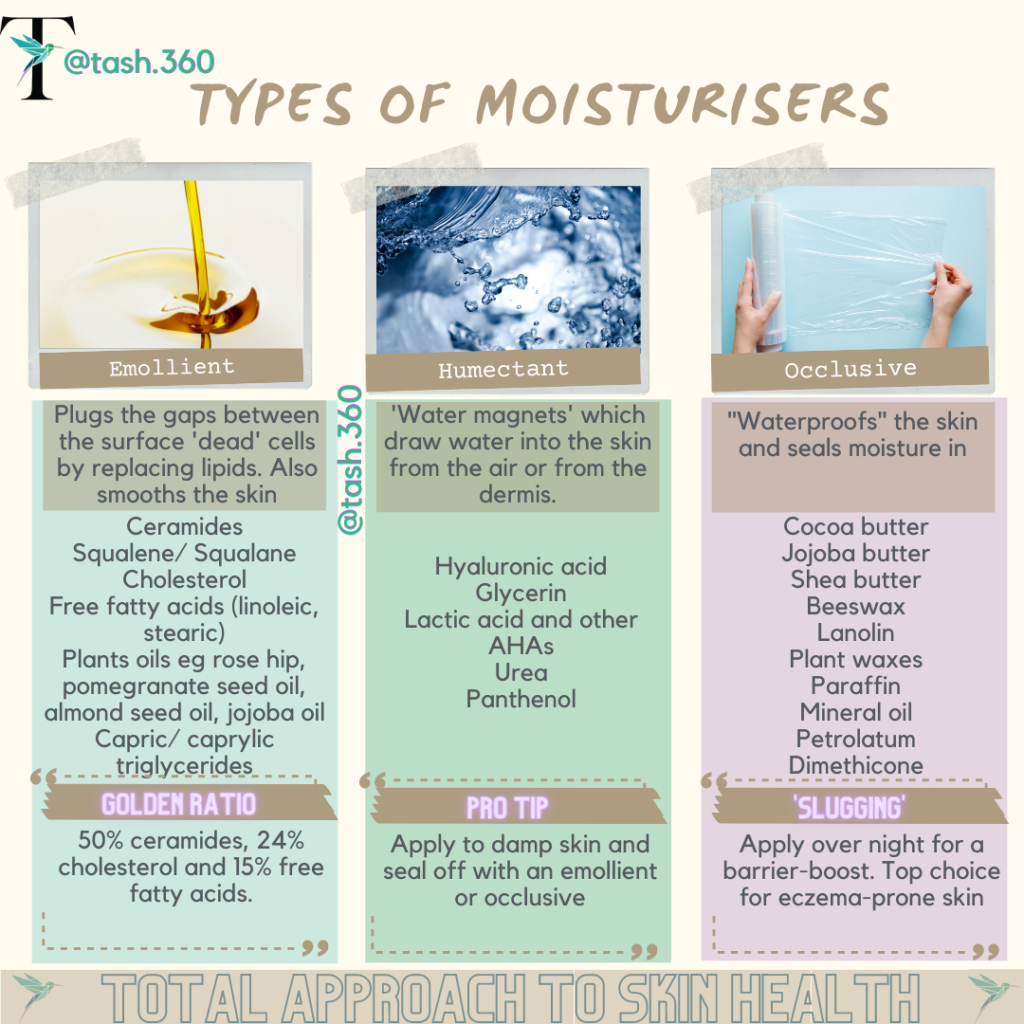
![]() So why have ceramides and essential fatty acids been singled out as the most important moisturizing ingredients?
So why have ceramides and essential fatty acids been singled out as the most important moisturizing ingredients?
They are skin-identical. Skin-identi-what?
Really nice ingredients that can be found in the skin or mimic the things that can be found in the skin naturally. Ceramides and essential fatty acids (think omegas and linoleic acid) are lipids in the outermost layer of the skin called the stratum corneum. They form part of the gooey stuff between the skin cells which glues them together to form a good skin barrier, ‘water-proofs’ the skin and which allows for communication between our skin cells.
![]() Balancing your lipids can also prevent breakouts.
Balancing your lipids can also prevent breakouts.
Applying the right fatty acids to your skin can normalize your natural sebum composition preventing blockage of your pores and acne breakouts. This is why ceramides and essential fatty acids are for every skin type and not just dry skin.
![]() But if our skin is already more than half fat already and we are like walking wagyu, why do we need to be applying more?
But if our skin is already more than half fat already and we are like walking wagyu, why do we need to be applying more?
Cold weather, hot water and dry heat can all deplete our natural skin ceramides and essential fatty acids. It goes without saying that this is not good news for keeping skin plump, supple and hydrated and able to deal especially with winter life.
![]() We also lose ceramides and essential fatty acids as we age.
We also lose ceramides and essential fatty acids as we age.
By the time we are in our 30’s, we will have lost around 40% of our skin’s ceramides and by our 40’s, they will be down by 60%. So if the fine lines around your eyes have you looking into the mirror with horror, it’s time to up your lipid game.
![]() Are some formulations with ceramides and fatty acids better than others?
Are some formulations with ceramides and fatty acids better than others?
Yes! Our own lipids in our stratum corneum work best in an intricate ratio of 50% ceramides, 24% cholesterol and 15% free fatty acids. Moisturisers which mimic this ‘golden ratio’ are going to work the best.
![]() What are some nice affordable options to use for my skin type?
What are some nice affordable options to use for my skin type?
This is by no means exhaustive and again, please consult with your derm to decide which one is best for you but here are some of my suggestions:
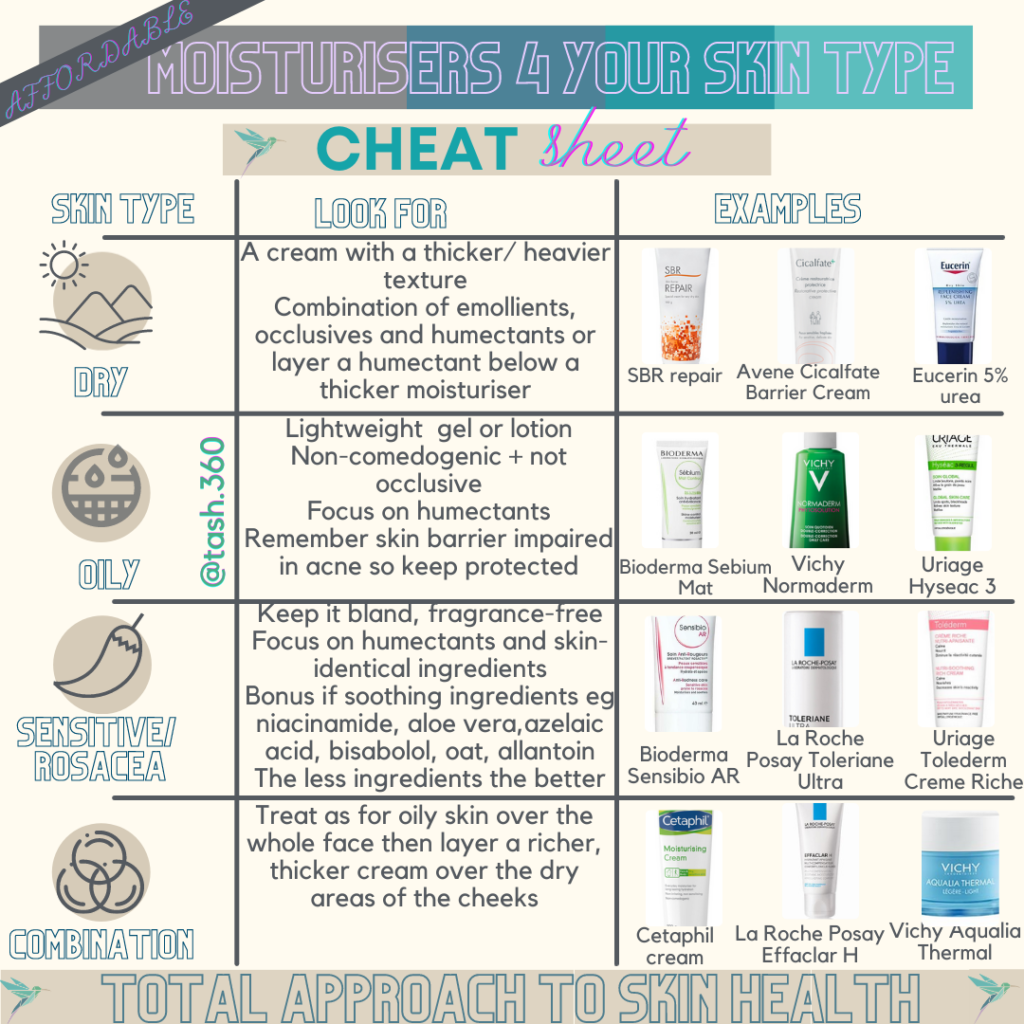
![]() What are key steps in protecting your skin barrier?
What are key steps in protecting your skin barrier?
- SPF. Protect your skin from damaging UV rays with a sunscreen with an SPF of at least 30. Apply an amount of TWO strips of sunscreen squeezed out onto the index and middle fingers from the crease of the palm to the fingertips. And don’t forget to reapply!
- Moisturise. Choose a moisturizer based on your skin type but always focusing on skin-identical ingredients.
- Protect your own skin lipids. Apart from choosing products which contain these essential lipids, you need to protect your innate ones by avoiding soap which is too alkaline and which contains harsh surfactants which strip the skin. An alkaline pH blocks the enzymes we need to manufacture our own ceramides. Another reason why our skin feels dry, tight and uncomfortable after too much washing with the wrong soap. Over-exfoliation is another lipid stealer.
So when looking for a moisturizer, make sure it has the right fats to really feed your skin barrier. You want to be serving it up Michelin-star ingredients rather than fast food fillers.



